Today’s edition of Route to Christmas to Christmas travels to Spain where we study a 2600 meter long leg in hilly terrain. – I was struggling to decide where is fastest to move through the terrain, Ivan Sirakov comments in his Doma archive. Paths and roads are thus a tempting option, but is it too far to run around?
Bojan Blumenstein speaks about a “quite tough long distance – very hot, steep and stony” in his Doma archive. The chosen leg today is leg 7 in the men elite course from XXXI Trofeo Costa Calida 2019 WRE Long – thanks a lot to Chris Terkelsen (TracTrac) for the tip!
This is a really interesting long leg with a wide variety of routechoices of different length! The leg is as usually first provided without routes – you may take a look at it and think about how you would attack this leg (if the image is too small, you may click on it to get it larger):
Location
You find other maps from the area in omaps.worldofo.com here. See also latest additions in 3DRerun from this area in order to learn more about this terrain type.
Webroute
Next you can draw your own route using the ‘Webroute’ below. Think through how you would attack this leg, and draw the route you would have made. Some comments about why you would choose a certain route are always nice for the other readers.
Then you can take a look at how the runners have solved this leg below. Unfortunately there are two different sources for the routes (TracTrac and the WorldofO 2DRerun database), and thus the routes are shown in two different illustrations (both with correct split times from the timekeeping system, except for runners who did not finish). However, it is still very clear what the best choice is: Running straight, but going on the right side of the first hill and also taking the control a bit from the right side. Audun Heimdal runs straight, runs fast, and also takes the correct (rightmost) choice in both these places.
Runesson takes left around the first hills and loses around 35 seconds on this (nearly all he is behind Heimdal; poorer runnability and longer). Several others who run a straight option take the left option on the last part of the leg (i.e. extra climb and less running on the big path) and lose 30-50 seconds on this part.
Density map
See below for a density map of some of the ones who have drawn their routes so far (available during the day when some readers have drawn their route).
Additional information
You find the complete map in omaps.worldofo.com at this location.
Route to Christmas series
The Route to Christmas series is a pre-Christmas tradition at World of O – giving the readers the opportunity to do one Route Choice Challenge each day from December 1st until December 24th. If you have got any good legs in GPSSeuranta or 3DRerun from 2019-competitions – or old forgotten ones which are still interesting – please email me the link at Jan@Kocbach.net, and I’ll include it in Route to Christmas if it looks good. Route to Christmas will not be interesting if YOU don’t contribute.
Not all legs are taken for the interesting routechoice alternatives – some are also taken because the map is interesting – or because it is not straightforward to see what to do on a certain leg. Any comments are welcome – especially if you ran the event chosen for todays leg!
 World of O News
World of O News

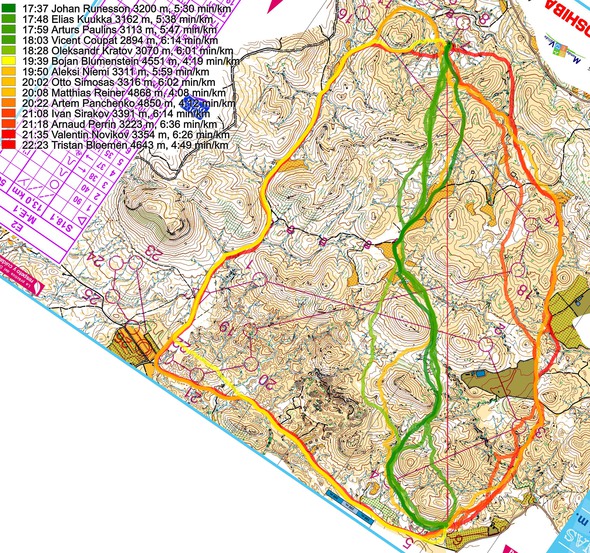
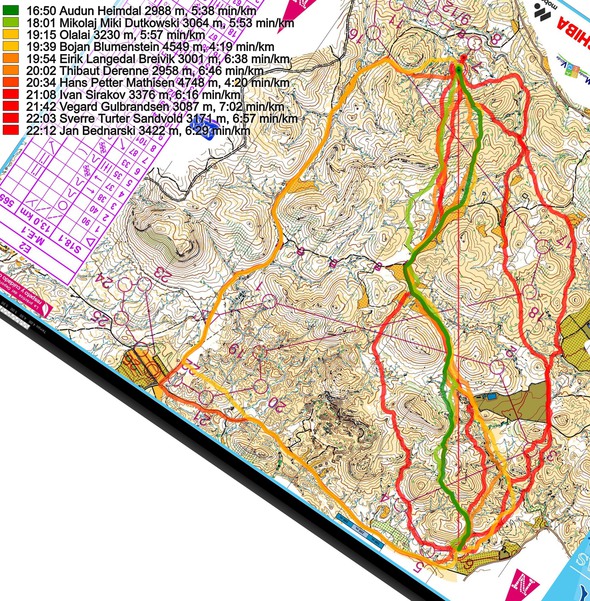
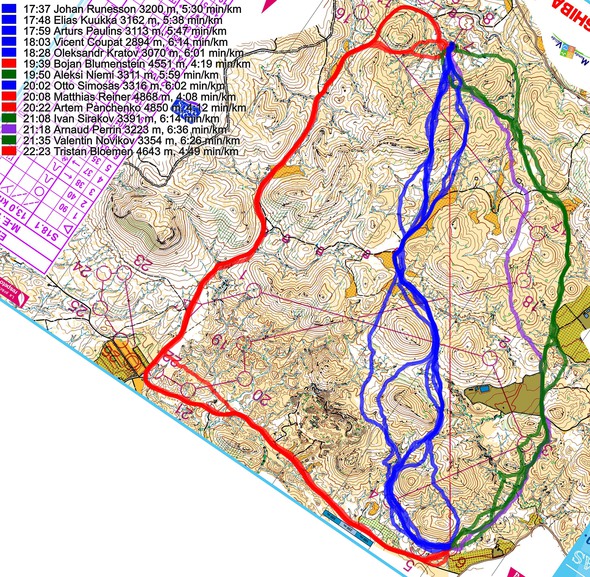
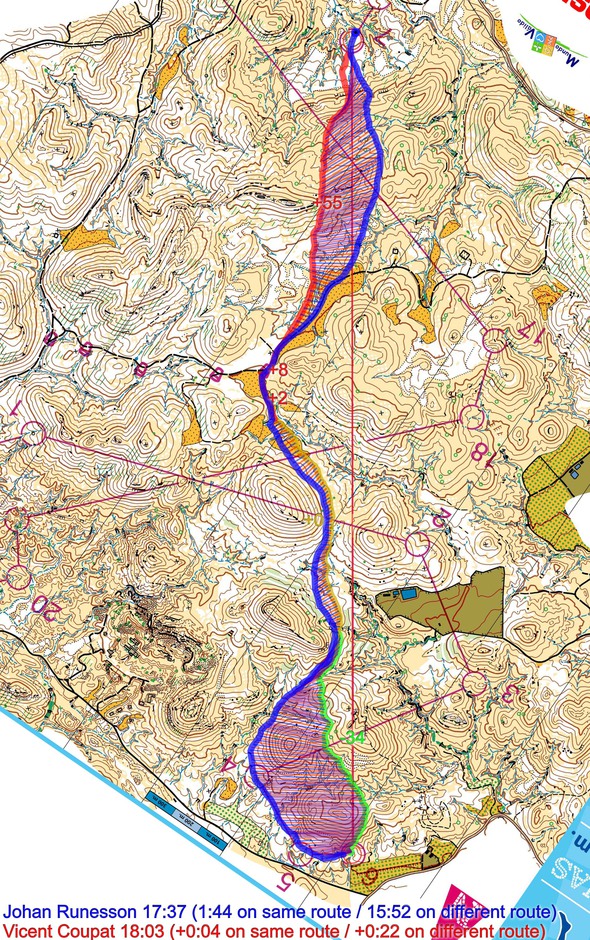

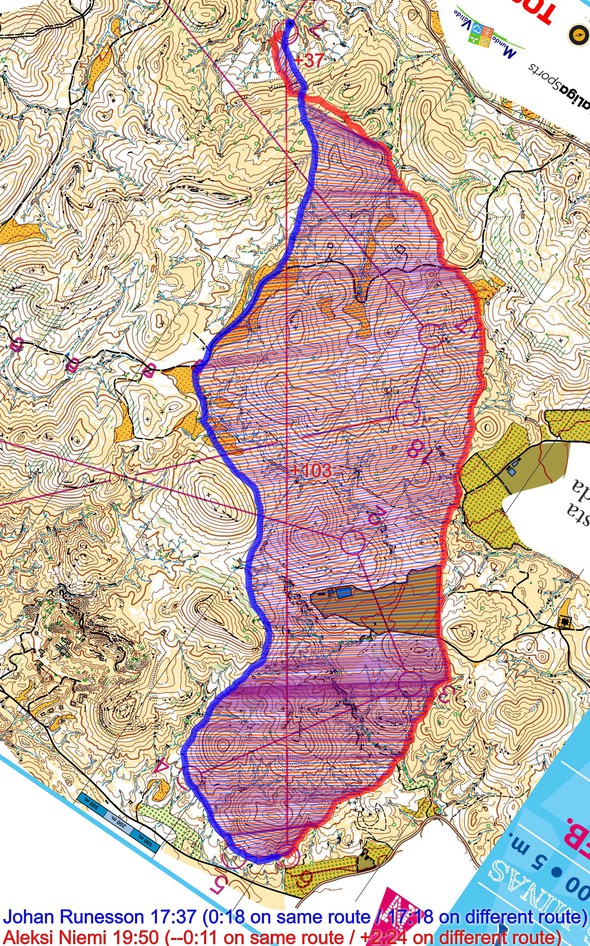
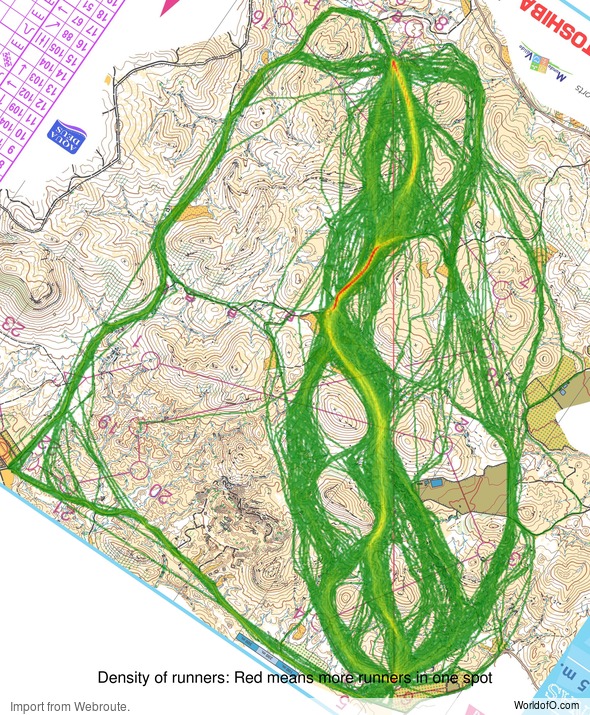
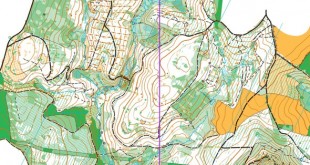
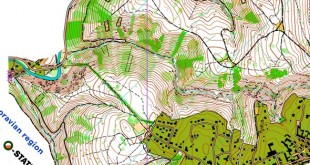
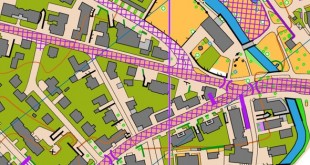
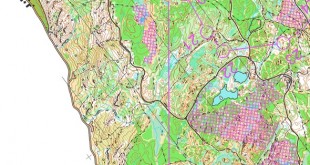
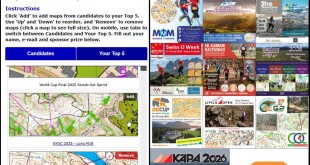
There is one major problem in most route choice analyses. Comments as to which route is the fastest are nearly always based on the assumption that all competitors have the ability to run the same speed as all the other competitors in all types of terrain. We, of course, all know that this is not true. On streamered courses where all ran the same route individuals would have very different times.
This does not mean that I think analyses are not interesting, but rather that one should be careful about the conclusions one comes to. A few years ago I did some tests where I had athletes run the same legs they had run in an earlier competition, and had them run different routes. Interesting routes but also difficult to interpret partially because, now it wasn’t a competition, they had been to the controls before and they had seen the leg earlier, etc.
Sure Bob, that’s a very valid comment. Therefore, I like analyzing races with lots of runners where you can understand from a combination of all routes which option is fastest. It also helps to divide the leg into smaller parts were different runners ran the same option for part of the route and different option for other parts. It also helps looking at relative running speed in other parts of the course. For this particular leg I think there is enough information to have good faith in the conclusion (I did more comparisons than the ones shown here to make my conclusions), but in some of the other cases with fewer competitors it is more tricky (but it is still fun with bigger variety in terrains).